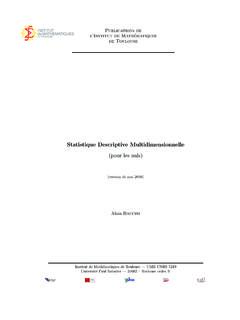Transcription of 6.241J Course Notes, Chapter 13: Internal (Lyapunov) stability
1 Lectures on Dynamic Systems and Control Mohammed Dahleh Munther A. Dahleh George Verghese Department of Electrical Engineering and Computer Science Massachuasetts Institute of Technology1 1 cChapter 13 Internal (Lyapunov) stability Introduction We have already seen some examples of both stable and unstable systems. The objective of this Chapter is to formalize the notion of Internal stability for general nonlinear state-space models. Apart from de ning the various notions of stability , we de ne an entity known as a Lyapunov function and relate it to these various stability notions.
2 Notions of stability For a general undriven system x_(t) f(x(t) 0 t)(CT ) ( ) x(k +1) f(x(k) 0 k)(DT ) ( ) we say that a point x is an equilibrium point from time t0 for the CT system above if f(x 0 t) 0 8t t0, and is an equilibrium point from time k0 for the DT system above if f(x 0 k) x 8k k0. If the system is started in the state x at time t0 or k0, it will remain there for all time. Nonlinear systems can have multiple equilibrium points (or equilibria). (Another class of special solutions for nonlinear systems are periodic solutions, but we shall just focus on equilibria here.)
3 We would like to characterize the stability of the equilibria in some fashion. For example, does the state tend to return to the equilibrium point after a small perturbation away from it Does it remain close to the equilibrium point in some sense Does it diverge The most fruitful notion of stability for an equilibrium point of a nonlinear system is given by the de nition below. We shall assume that the equilibrium point of interest is at the origin, since if x 6 0, a simple translation can always be applied to obtain an equivalent system with the equilibrium at 0.
4 De nition A system is called asymptotically stable around its equilibrium point at the origin if it satis es the following two conditions: 1. Given any 0 9 1 0 such that if kx(t0)k 1, then kx(t)k 8 t t0: 2. 9 2 0 such that if kx(t0)k 2, then x(t) ! 0 as t !1. The rst condition requires that the state trajectory can be con ned to an arbitrarily small \ball" centered at the equilibrium point and of radius , when released from an arbitrary initial condition in a ball of su ciently small (but positive) radius 1.
5 This is called stability in the sense of Lyapunov ( ). It is possible to have stability in the sense of Lyapunov without having asymptotic stability , in which case we refer to the equilibrium point as marginally stable. Nonlinear systems also exist that satisfy the second requirement without being stable , as the following example shows. An equilibrium point that is not stable is termed unstable. Example (Unstable Equilibrium Point That Attracts All Trajectories) Consider the second-order system with state variables x1 and x2 whose dynamics are most easily described in polar coordinates via the equations r_ r(1 ; r) _ sin2( 2) ( ) qwhere the radius r is given by r x21 + x22 and the angle by 0 arctan (x2 x1) 2.
6 (You might try obtaining a state-space description directly involving x1 and x2.) It is easy to see that there are precisely two equilibrium points: one at the origin, and the other at r 1, 0. We leave you to verify with rough calculations (or computer simulation from various initial conditions) that the trajectories of the system have the form shown in the gure below. Evidently all trajectories (except the trivial one that starts and stays at the origin) end up at r 1, 0. However, this equilibrium point is not stable , because these trajectories cannot be con ned to an arbitrarily small ball around the equilibrium point when they are released from arbitrary points with any ball (no matter how small) around this equilibrium.
7 Unit circle x y Figure : System Trajectories stability of Linear Systems We may apply the preceding de nitions to the LTI case by considering a system with a diagonalizable A matrix (in our standard notation) and u 0. The unique equilibrium point is at x 0, provided A has no eigenvalue at 0 (respectively 1) in the CT (respectively DT) case. (Otherwise every point in the entire eigenspace corresponding to this eigenvalue is an equilibrium.) Now x_(t) e At x(0) 2 1 t 3 e V64 . 75 . Wx(0) (CT ) ( ). nte x(k) Ak x(0) 2 3 k 1 V64.
8 75 . Wx(0) (DT ) ( ). k n Hence, it is clear that in continuous time a system with a diagonalizable A is asymptotically stable i Re( i) 0 i 2 f1 : : : ng ( ) while in discrete time the requirement is that j ij 1 i 2 f1 : : : ng ( ) Note that if Re( i) 0 (CT) or j ij 1 (DT), the system is not asymptotically stable, but is marginally stable. Exercise: For the nondiagonalizable case, use your understanding of the Jordan form to show that the conditions for asymptotic stability are the same as in the diagonalizable case.
9 For marginal stability , we require in the CT case that Re( i) 0, with equality holding for at least one eigenvalue furthermore, every eigenvalue whose real part equals 0 should have its geometric multiplicity equal to its algebraic multiplicity, , all its associated Jordan blocks should be of size 1. (Verify that the presence of Jordan blocks of size greater than one for these imaginary-axis eigenvalues would lead to the state variables growing polynomially with time.) A similar condition holds for marginal stability in the DT case.
10 stability of Linear Time-Varying Systems Recall that the general unforced solution to a linear time-varying system is x(t) (t t0)x(t0) where (t ) is the state transition matrix. It follows that the system is 1. stable at x 0 if sup k (t t0)k m(t0) 1. t 2. asymptotically stable at x 0 if lim k (t t0)k! 0 8t0. t!1 These conditions follow directly from De nition Lyapunov's Direct Method General Idea Consider the continuous-time system x_(t) f(x(t)) ( ) with an equilibrium point at x 0. This is a time-invariant (or \autonomous") system, since f does not depend explicitly on t.

















